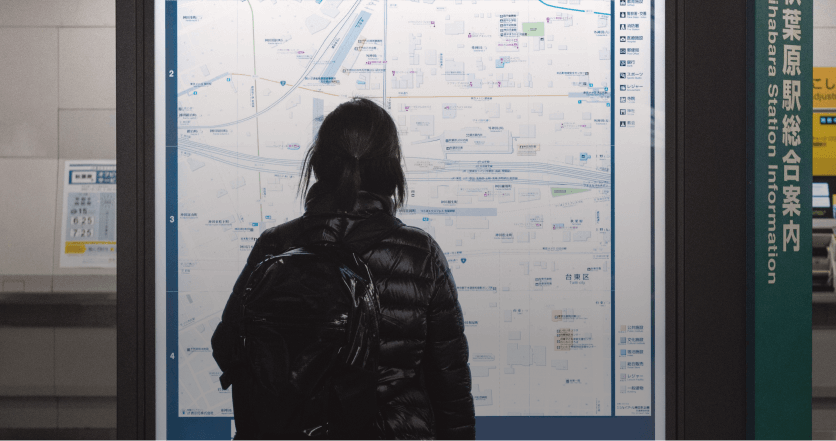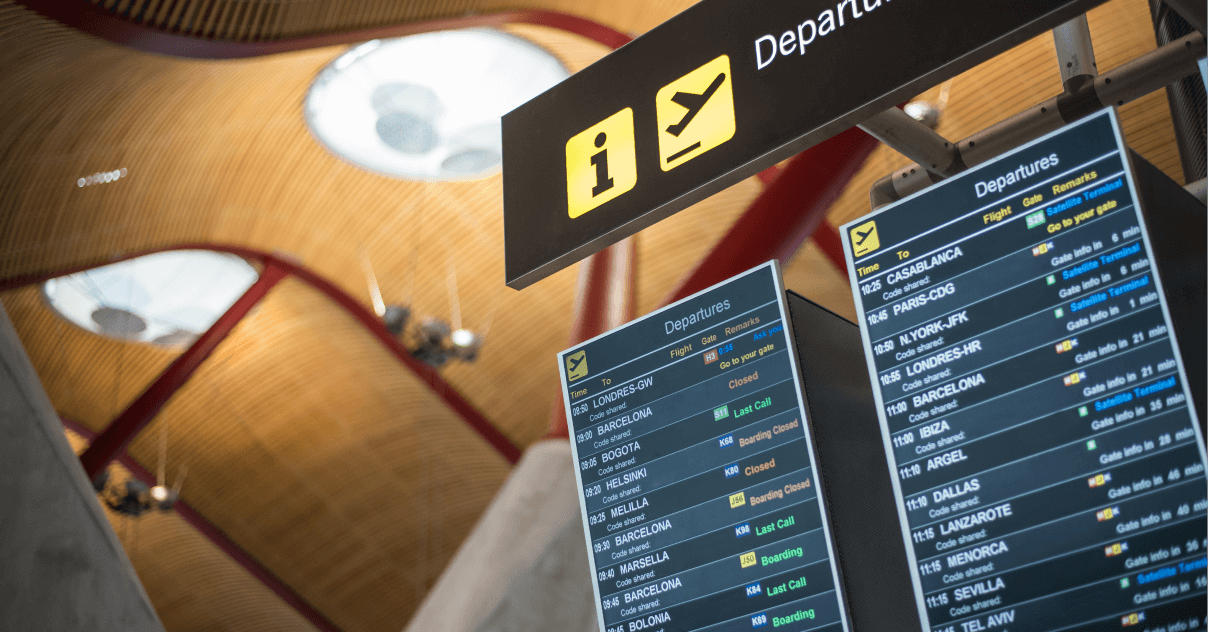Travel is a high-pressure experience – fast-paced, unpredictable, and often stressful. Did you miss a connection, experience an unexpected weather delay, or simply navigate an unfamiliar space? Travelers rely on real-time information more than ever, right? But still, many organizations treat their digital signage as an afterthought, a static screen that plays generic content on a loop.
But here’s the thing: Digital signage is a strategic channel that can actively reduce friction, enhance the experience, and even protect people’s time and safety. The moment you treat your digital screens as part of your overall content strategy, everything changes – for your team, your customers, and your brand.
When used intentionally, digital signage can become one of the most powerful travel tools. In this article, we’ll discuss five ways to use digital signage for travel updates.
1. Deliver real-time transit updates
The number one frustration for travelers? Uncertainty. A last-minute gate change or a platform delay can throw off someone’s entire trip, especially if they don’t hear about it until it’s too late.
Digital signage should be the first and most visible place people get accurate, real-time information. With the right setup, you can connect screens to your scheduling systems or public transit APIs and ensure your content auto-updates across all locations. No more printing new signs or chasing people down with a megaphone.
A study by IBM found that 72% of travelers say real-time updates improve their experience significantly, especially when they’re accessible and easy to understand.
2. Share local weather and travel conditions
Well, as you may already know, it’s not just planes that get delayed: Buses, ferries, and even walking tours get disrupted by unexpected weather or traffic. With digital signage, you can integrate live weather updates or display regional alerts, like fog advisories or road closures, so travelers can adjust before they’re affected.
This kind of content shows you’re thinking ahead and earns trust. People remember when a company helped them avoid a headache.
3. Keep people moving (and safe)
Think of your digital signage as an invisible team member helping guide traffic flow. During busy hours, a simple message like “Security wait time: 15 minutes” or “Ferry loading: Terminal B” can reduce crowding, relieve staff, and minimize confusion.
One great example is Athens International Airport, which used digital signage during the COVID-19 pandemic to direct passenger flow in real-time. By adapting messages dynamically, they reduced bottlenecks and improved safety without adding extra staff.
This kind of smart messaging can be used every day to improve how people move through your space.
4. Make it easy to update, always
Of course, none of this works if it’s hard to manage.
That’s where the right platform makes a huge difference. If updating your screens requires design skills, IT tickets, or hours of effort, you won’t keep up with what travelers need.
An intelligent digital signage platform lets anyone, not just designers, create and push updates quickly. Change background images, for instance, or schedule messages across dozens of locations, in minutes, not days.

5. Use Templates, Apps & Live Data for maximum impact
Today’s digital signage helps you use the right tools to deliver the right message, faster.
With a rich library of templates, built-in apps for weather, clocks, and transit data, and an intuitive drag-and-drop editor, platforms like Yodeck make it easy to create bold, relevant content, without bloated costs or long lead times.
According to Nielsen, digital signage can boost content recall by 83%, far outpacing traditional signage or static boards.
When every screen becomes a source of useful, actionable content, travelers take notice and so do your stakeholders.
Final thoughts
Digital signage becomes valuable when it’s aligned with your wider goals. Are you managing an airport, a regional bus line, a cruise terminal, or a tourism center? Your screens can do more than inform. They can guide, reassure, and even inspire.
All it takes is the right strategy, and the right platform to support it.Want more insights on how to get the most out of your digital signage?
Head over to our blog for practical tips, real-world use cases, and free templates to get started.
